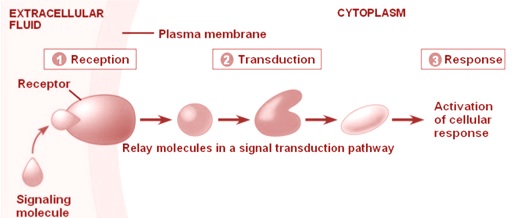Molecules in Cell signaling Assignment Help
Signal means communication. When we talk to someone, through phones, calls, internet; the message is instantly delivered. How is it possible that the person on the other side immediately comes to receive whatever we speak or write? This is all because of signals. There are signals set by scientist that makes the process of communication easy and effective. Likewise, within the living body as well, there are signals that help one cell to communicate with the other cells. These signals are very important because it helps in the proper body functioning, growth and development.
Paracrine signaling: In this process, the signals are sent to the local surface and not to the very distance targets. Hence, for this either the cells nearby takes up the molecule quickly and if not taken up, then these molecules are destroyed by the extracellular enzymes.
Autocrine signaling: In this process, cell releases chemicals that bind to the autocrine receptor present in the same cell and hence all the required changes take place.
Synaptic signaling: It occurs in nerve impulses where neurotransmitters are released for the purpose of sending impulse to the nerves.
Endocrine signaling: In this case, hormones are involved in the process of signaling. Cells secrete their hormone in the blood thus, the hormones reaches the target tissues and act on them.
Hence, the types of signaling from the cell and the respond that they generate varies depending upon the extracellular and intracellular condition.
There are thousands of signals around each cell, and hence every cell is specialized so excellently that they exactly know the way to respond to those signals.
Molecules in Cell signaling Assignment Help By Online Tutoring and Guided Sessions at AssignmentHelp.Net

Some of the signaling molecules are:
Nitric oxide and carbon monoxide: NO is synthesized by an enzyme named NO synthase. It is hydrophobic in nature and hence is one of the important signaling molecules present in vertebrates. NO shows a paracrine effect because it is very unstable. Hence, once it diffuses to the target cell, the binding of NO alters the activity of target enzymes. Example includes: erection of penis by signaling of blood vessels. CO acts similarly to NO both stimulate guanylyl cyclase and hence bring changes to the target cells.
Steroids: Steroids acts on the target cell by binding to the receptor. The process takes place by the diffusion of steroid hormone in the target membrane. These receptors are intracellular and present in the target membrane thus binding with the steroids molecules. Beside steroid hormone, thyroid hormone, retinoid and Vitamin D all act in the similar way. But they all differ in their structural and chemical organization. Steroids hormone have several different functions in different organisms. Some steroid hormones are responsible in development of secondary sexual characteristics in male and females, hence called steroids sex hormones. Likewise, some are involved in the process of molting in insects called ecdyson. Similarly, thyroid hormones are involved in metabolic functions; retinoic hormone act as local mediators and Vitamin D in the skin pigmentation.
Peptide hormones, neuropeptides and growth hormone: Peptide hormone are other class of signaling molecule produced mostly in animals that helps in the cell- cell communication. This includes most of the hormones that are produced by the pituitary gland. Likewise, neuropeptide are the hormones that are secreted by some of the neurons for cell signaling. Such as endorphins that function both as neurotransmitter and neurohormones. Growth hormones are involved in growth of cell and their differentiation. The best example if this can be platelet derived growth factor. All these hormones fail to cross plasma membrane and hence bind to receptor on the surface of the cell.
Neurotransmitter: These involve the transfer of nerve impulse or nerve signal to other neurons or to the other cells of the body. They are hydrophilic in nature and acts by binding to the receptor present on the surface of target cells. Example: epinephrine (act as hormone as well as neurotransmitter).
Eicosanoids: These are lipid signaling molecules that are readily broken down to act either in autocrine or paracrine manner. Examples include prostaglandins.
Plant hormone: Plants too have the cell signaling pathway that involves different types of plant hormone which acts differently in target cell. They are: auxin, help in cell growth and differentiation; gibberellins, helps in elongation of stem; cytokines, helps in cell division; ethylene, helps in ripening of fruits; and so on.
Thus, these are some of the important signaling molecules and hormones that take part in cell signaling. Hence, if functions of any of these molecules is disrupted the target cell cannot respond in proper way and hence can cause problem of the respective system.


